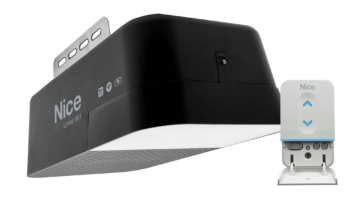A customer came in the other day asking about completing the install on a system…a system that he had wired more than eight years ago! When he finally remembered the name of the system he had planned on purchasing, it turned out to be a Niles system that was discontinued long ago. Fortunately, the house had been wired in a manner that supported a variety of different audio distribution systems, and the customer was able to purchase a modern system that worked with his existing wiring.
But, when something that’s been installed for years fails and the manufacturer no longer supports it, and there is no similar replacement, you can run into an awkward conversation with the customer.

Image: Thinkstock
Years ago we were an ELAN dealer, and during the years we used ELAN products as our principal audio distribution system, we installed dozens of systems that included the company’s CommController. This device paired with an ELAN doorbell with speaker at the front door that when pressed, would pause the music (if playing) and chime a note (or .WAV file) through all the speakers in the home. This worked great in larger homes because the sound system was far more efficient for notifying you of a visitor than a single door chime, and it allowed the homeowner to use any landline phone to talk to the person at the front door. It also offered a pretty elegant solution for paging over the audio speakers.
Eventually, however, ELAN stopped making, repairing, or supporting the CommController and doorbell/speaker assembly, and now as these installed systems start to fail, there is no simple replacement solution. Not only does the customer lose their doorbell, they also lose the paging feature many had liked—and paid good money for. And since there was generally no “regular” doorbell installed on these jobs, these customers are now faced with having to look for used equipment on E-Bay or Amazon, cobble something together if they want a “traditional” doorbell, or forego a traditional bell and go with something like Ring.
Like many of you, we have other legacy systems whose control was built around proprietary in-wall keypads and touchscreens. As the head-end controller on these jobs fail or if the customer wants to upgrade to something newer that allows for iPhone/iPad control, the customer is left with the choice of either leaving large, extinct technology in the wall, or replacing it with an iPad and using something like a Padimount in-wall iPad mount.
Other issues arise when a component fails and the technology infrastructure has moved on so much that replicating what they had creates a cascading domino effect of, “We’ll need to replace this…and this…and this…and re-run this…” Say when a receiver, TV, or whole-house distribution system based around component or composite video wiring bites the dust. I can think of a couple of projects we had from my earliest years at our company where S-video cabling was the lynchpin holding everything together. (Cringe!)
This is also one of the biggest reasons why I try to discourage people from flush-mounting a TV into a recessed opening. At some point, that TV will die–or just need upgrading—and at that point a person’s TV buying decision is going to be handcuffed by, “What can I find that will fit into an X by Y sized opening?”
As integrators, customers often expect us to be able to peer into the future to anticipate and plan for problems years before they occur. But sometimes our palantír seeing stones aren’t powerful enough to anticipate every eventuality, at which point, getting things back on track can be a tricky and expensive proposition.







